Big problem with popular Bali tourist attraction
Most Aussies go here when they go to Bali but there’s a big problem with Ubud’s most popular attraction.
Monkeys are meant to be cute, right?
That’s the sentiment which led me to Ubud’s Sacred Monkey Forest Sanctuary, one of the main tourist attractions in the central Balinese town.
You may recall Ubud’s reputation was given a boost by Elizabeth Gilbert, the American author who documented her travels there in memoir ‘Eat Pray Love’, later adapted into the Julia Roberts film of the same name.
Interestingly, Gilbert’s bestseller dodges any extended mention of Ubud’s infamous Monkey Forest, and now, I might know why.
And it’s all to do with the star attraction – the badly behaved primates.

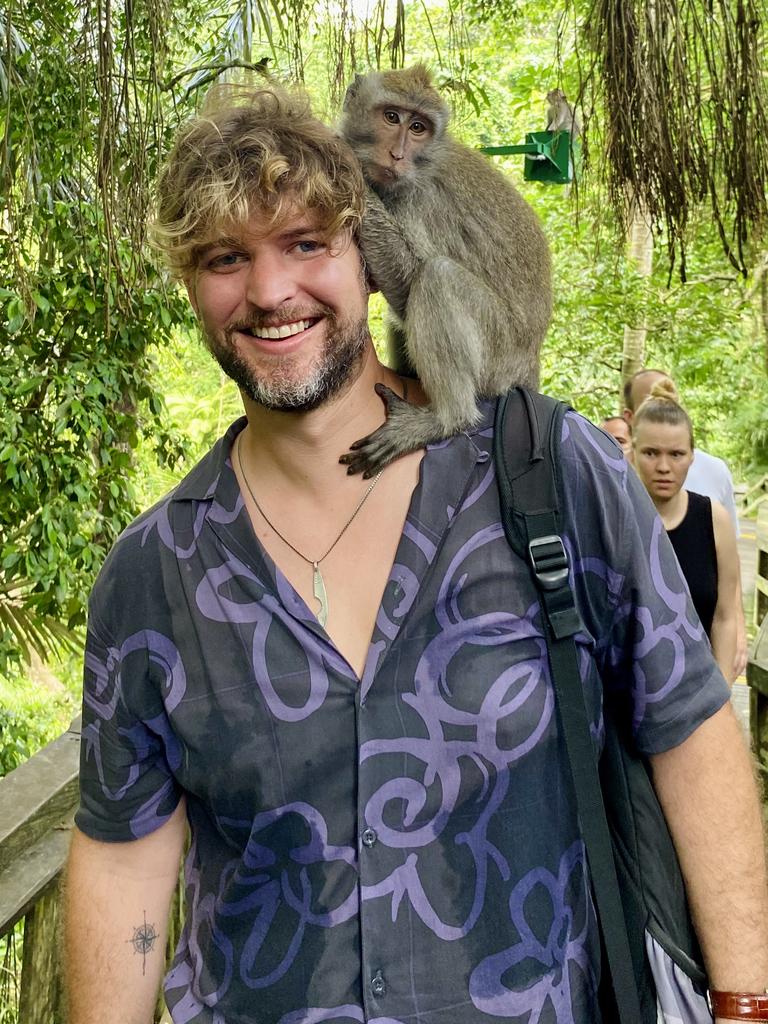
Dating back to the 14th century, the sanctuary spans more than 12 hectares, with winding stone paths, carved statues and bridges, enchanting temples, and the local residents, around 1200 endangered long-tailed macaques.
There are great conservation efforts in place to look after the monkeys, including research projects to study their social habits, while donations directly help with food, vet bills, and general upkeep.
It all sounds pretty great on paper, but within about 30 minutes of entering the facility, I was all shaken up, stressed out, and wondering if the entry ticket (starting at IDR 80,000 or $8) was worth it.
360 vision is an essential
As you pass the monkeys in the park, some are confident enough to jump on your shoulder or climb up your arm, and if you time it right, it makes for a cute Instagram photo.
It’s also fascinating just watching them interact among one another and seeing their social structures play out.
But the moment everything turned south happened as I climbed some stairs in the middle of the rainforest, and one of the larger adult monkeys lazing about on the handrail jumped onto my backpack.
You’re told to store all your personal items safely away, but that didn’t stop the monkey from reaching into the pockets of my bag and grabbing a full tube of sunscreen.
Snapping off the plastic lid, it tried to unsuccessfully lick the contents, convinced there was food inside.


Much to my horror, the scene unfolded around a group of tourists, urging me to get the sunscreen back, but this macaque was in no bartering mood.
When you enter the park, you’re also urged against making eye contact with the monkeys as it’s seen as a form of aggression.
And this was my biggest mistake, as I attempted to swipe back the sunscreen, our eyes locked, and he wasn’t happy, becoming angry and baring his teeth.
My heart racing, I stepped away, and the monkey, also having enough of us onlookers, swung off into the distant forest to properly examine its trophy.
Quickly realising there was no food to be found, the monkey dumped the sunscreen and the showdown was over.
This was later retrieved by a park attendant, however, it was in a very sorry state and went straight into the bin.
More than anything, I was dying of embarrassment, and I was lucky to walk away with just one less tube of Banana Boat, and one bruised ego.
But things could have been much more dire.
It’s their turf, after all
My experience doesn’t come close to some of the horror stories I’ve read about — a quick scroll across TikTok and you’ll see clips of tourists visiting the sanctuary who’ve lost phones, handbags, passports, and in some cases have been bitten or attacked.

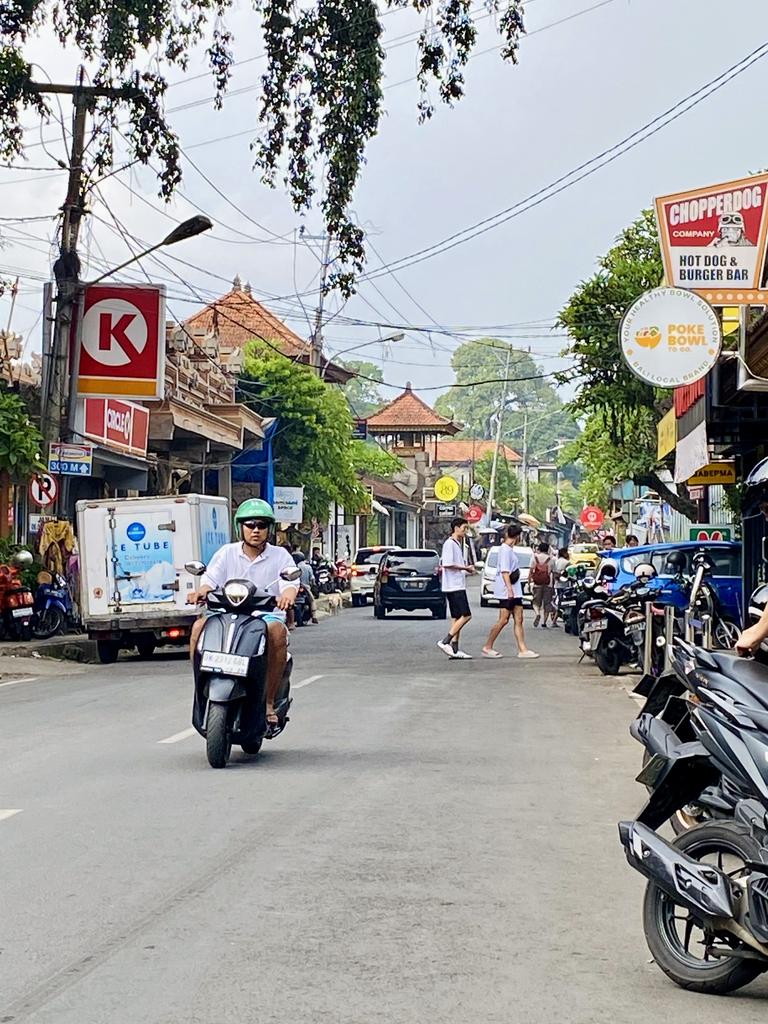
While the monkeys are clearly well looked after here and have a comfortable life, there’s got to be a better way to go about things? An instant fix to my situation would have been an option to check my bag check at the entrance.
The other major problem is that because the animals have become so used to people, there’s no hesitation when it comes to their curiosity.
We’re on their turf as well, after all.
Regardless, I’d had enough monkey business for one holiday and decided to eat, pray, and get the hell out of there.
Thankfully, Ubud has many other activities and experiences on offer, and three nights here is perfect for a mini getaway, both as a solo traveller or with others.
The town is around an hour’s drive from Denpasar airport depending on traffic, and with just one road in, you’re best to take a taxi or a shuttle from the airport, which typically costs 400,000 IDR ($40) and can be booked through your accommodation.
Known casually as the “cultural heart of Bali”, Ubud definitely lives up to that reputation.
The town is a big drawcard for expats and wellness enthusiasts, and in some ways has a similar vibe to Byron Bay, except of course you’re in the middle of an inland rainforest.
Like other parts of Asia, at this time of year it’s hot and humid, and you only really need to pack light.
You can walk on foot to most of the main sights, but short trips on the back of a scooter won’t be more than a few dollars, plus it’s a fun way to get around.


Eat, breathe, get the app
Make sure you download the Grab app on your smartphone to help you get around – it’s basically the South-East Asian version of Uber and is widely used.
Just make sure you’re covered under your travel insurance policy, and always check the drivers have a spare helmet.
That’s how I arrived on the first day of my trip to a morning breathwork class, zipping through the backstreets and sprawling rice fields of Petulu, a region on Ubud’s fringes.
The last few months I’ve been exploring breathwork and its many benefits, and you’ll find many studios in Ubud offer different styles of this practice.
One of these spaces is ‘Let’s Get Lost’, opened in October 2023 by English expat Anthony Ball and his partner Alicia, and it’s literally lost out in nature among the rice fields.
I was actually late to the class because my Grab driver dropped me off at the wrong destination, and so after getting lost on my way to ‘Let’s Get Lost’, I was on the verge of bailing, but also glad I stuck around because the experience was well worth it.
Settling onto one of the yoga mats in the open-air space, Anthony guided us through ‘rebirthing breathwork’, a less intensive style which uses continuous circular breathing through the nose instead of the mouth.
A short time after beginning this breathing pattern, I found myself entering a state of deep relaxation, and becoming very present to my mind and body.
It was a chance to explore the subtext of my life within that moment, and I left with some powerful observations and questions to further ponder.
The journey ran for 90 minutes and was accompanied by live music, and afterwards, there was an opportunity among the group to reflect on our experience.
All of us reported feeling more grounded and relaxed.
The class was very affordable at 150,000 IDR (around $15) for the hour, and if you’re curious to explore more here, ‘Let’s Get Lost’ also has ice bath sessions, yin yoga, and reiki.
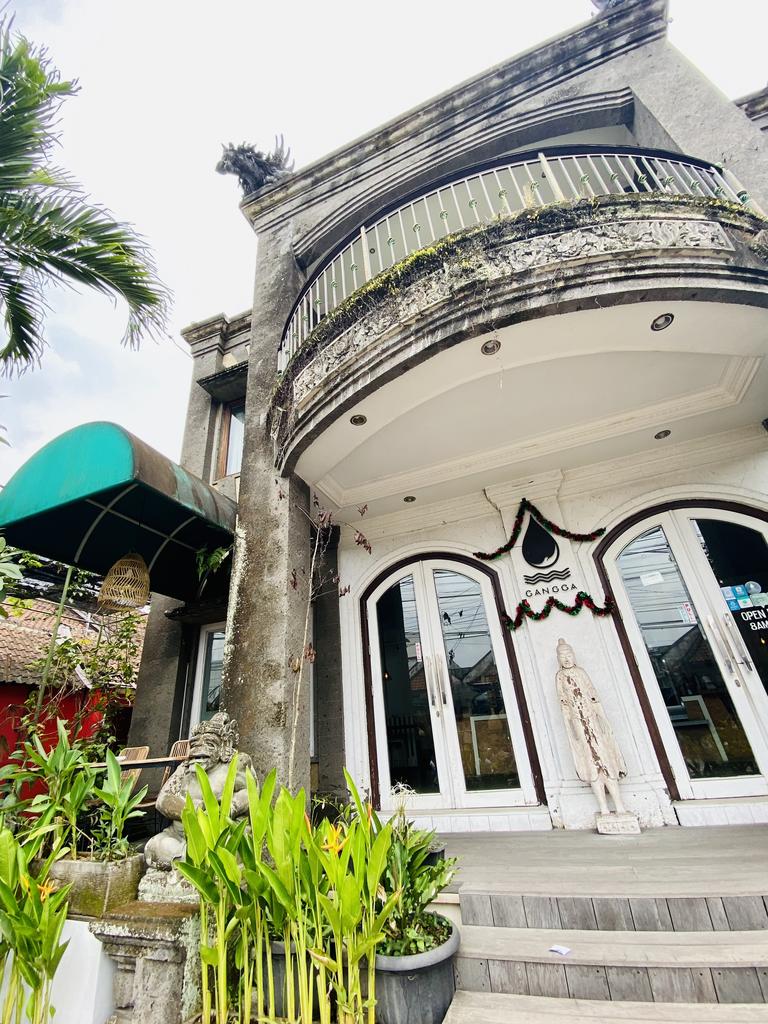

Coincidentally, Anthony’s breathwork class left me on a little cloud, so rather than catch a scooter back to town, I wandered back on foot, weaving through the rice fields, and passing by craft stores, furniture wholesalers, and small shrines, all dotted along the streets of Petulu and then later through Peliatan.
These are some of the working neighbourhoods of Ubud, away from the tourists and full of locals, who’ll happily wave and will flash you a massive grin as you greet them with “Selamat Pagi” or “Good morning!”
Along the way, I came across Gangga Coffee, billed as one of the best coffee roasters in town, and it definitely lived up to its reputation.
Stealing my own little corner by the window, the caffeinated pit stop was the perfect place to watch the world go by and get some reprieve from the humidity outside.
Opened in 2017 and roasting its own beans from the Kintamani region of Bali, Gangga really knew how to make a good long black.
This, for me, was also preferable to trying the locally-produced Luwak coffee, which has attracted ongoing controversy over the years.
Made from the droppings of the Indonesian cat of the same name, which likes to eat coffee cherries, Luwak coffee producers have largely come under fire with claims of mistreating the animals and keeping them in cages, in what’s a largely unregulated industry.
Venturing further out
Outside of Ubud, there’s heaps to see and explore.
I paid around 800,000 IDR ($80) to see all of the main highlights across the course of one day, which included the spectacular Ceking rice fields, a swim at the Tibumana waterfall, and exploring Tirta Empul, a sacred holy spring dating back to the 10th century.
If you’re keen to take part in the purification ritual in the water, expect a bit of a wait.
It was very busy here at the complex even on a weekday, in part because it’s considered one of the holiest places in Bali.
One of my favourite sites to explore was Goa Gajah aka the ‘Elephant Cave’, an archaeological complex dating back to the 9th century which was declared a UNESCO world heritage site in 1995.
Built originally as a meditation sanctuary for local Hindu and Buddhist monks, the entrance to the cave has been carved dramatically into the face of a demon.
At most of these sites, it’s mandatory to wear a sarong to cover your knees, and these can be purchased or rented at the entrance.

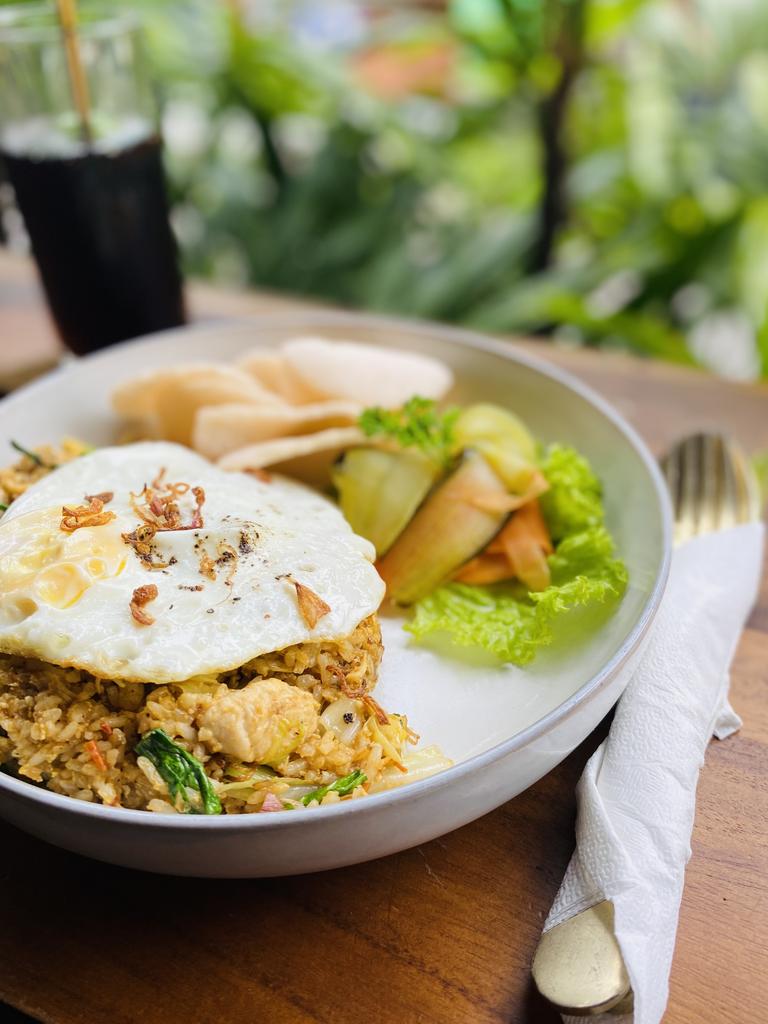
Back in Ubud, you’ll find a massive range of accommodation options based on your budget.
I kept things simple and stayed at Etsy House, a family-run villa in the centre of town, costing 1,650,000 IDR ($165) for three nights, with breakfast included each morning.
One of the best things was the location, I was a stone’s throw from the central market, Ubud’s main palace, alongside restaurants, cafes, and bars, most of which are open until at least 10pm, and even later if they’re busy.
Like what I found in the Gili Islands, street food or Warung meals are priced between 30,000 and 50,000 IDR ($3 to 5), with Bintangs starting at around 25,000 IDR ($2.50).
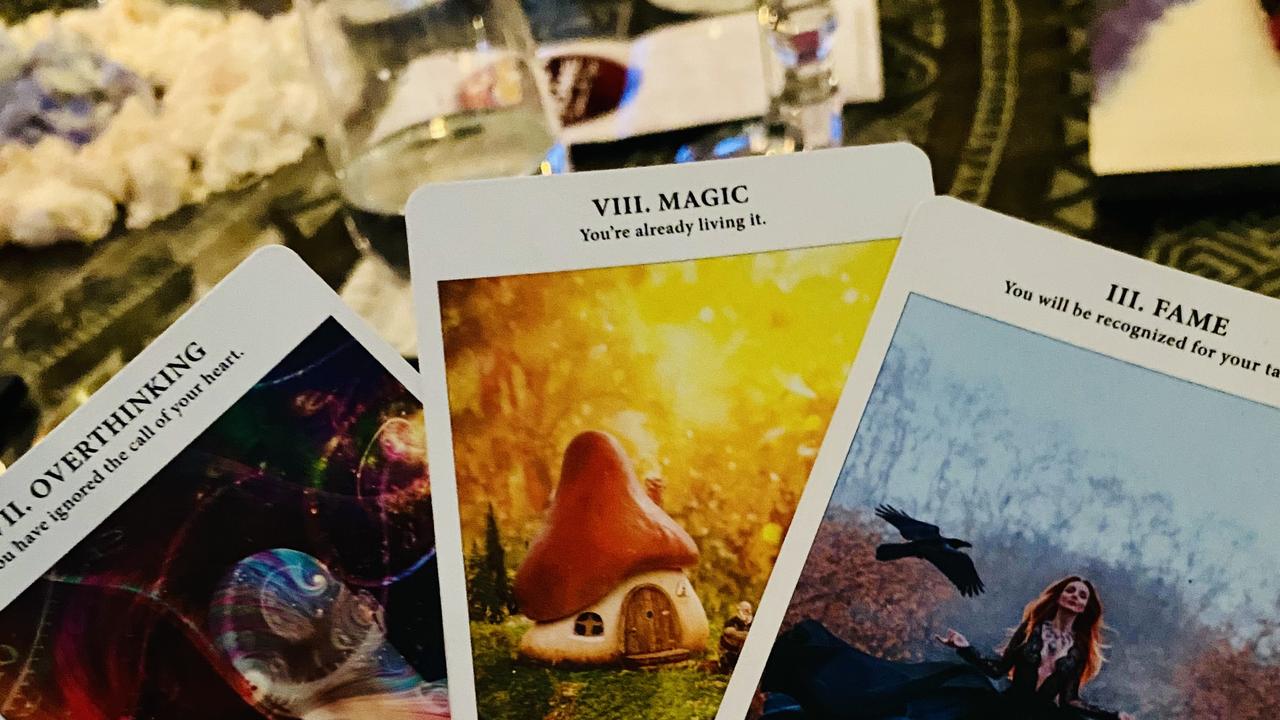
Restaurants and cafes catering to Western tastebuds are a little higher at 100,000 IDR ($10) and here you’ll get your burgers and pizza fix sorted.
There’s also a whole range of up-market places to grab dinner, including Merlin’s, an immersive restaurant experience that has been blowing up across social media for its medieval theme, which transports diners to Camelot.
Three courses here plus drinks came to around 1,000,000 IDR ($100), and the big drawcard to the venue is the way you can order – waiters ask you to draw a series of tarot cards which correspond to different dishes on the menu.
More Coverage
You’re allowed to change your mind, and in the end, I ran with the lentil curry, pork shoulder and chocolate forest mousse to finish, which were all very tasty and washed down with some red wine.
Thankfully, the tarot cards did not foresee any monkeys in my future.
Troy Nankervis is a freelance journalist and producer. You can follow his travels on Instagram.





